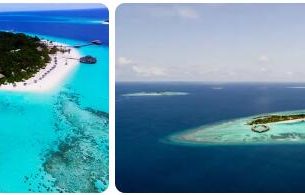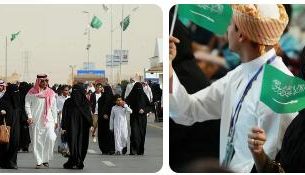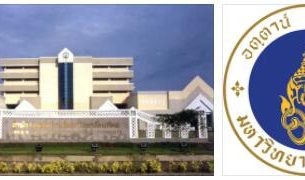Lebanon – “Switzerland of the Middle East”
Lebanon has been shaken by numerous wars and civil wars in the past few decades. These have made it forget for many of the great importance of the region since antiquity with kingdoms and trade republics such as Byblos, Tire or Sidon in the eastern Mediterranean. After a very eventful history, today’s country celebrates independence from France every year on November 22nd, which was sealed in 1943.
Lebanon then distinguished itself not only as an ally in the “anti-Hitler coalition”, but also as one of the founding members of the United Nations. Unfortunately, the once economically stable, politically neutral and noticeably westernized “Switzerland of the Middle East” has become a synonym for terror and violence since the bloody civil war in the mid-1970s until 1990. Other wars such as the most recent Second Lebanon War against Israel (2006) and, most recently, the fierce fighting between the Lebanese army and the radical Islamic underground organization “Fatah al-Islam” in 2007 were devastating for the image that Lebanon is conveying to the outside world. But despite all this, Lebanon has a second, much friendlier face:
One would like to wonder about this small country between Syria, Israel and the Mediterranean. With an area of only 10,500 km2, it is only half the size of the German state of Hesse.
It meanders along the sea for only about 220 kilometers. And at the widest point it is barely 65 kilometers. And yet Lebanon unites an incredible cultural, religious and scenic wealth that is second to none. Whoever enters the country for whatever reason – be it for relaxation, for sport, for their own education or for hiking on the paths of Jesus and his followers – will be delighted.
Lebanon offers its visitors the unusual advantage of switching between breathtaking mountain ranges and archaeological sites, between deep valleys and rushing rivers, between blooming fields and barren plains in the shortest possible time. Especially in spring you experience the contrasts in their absolute, because then it is possible to escape the freezing cold of the ski areas in the warming waters of the Mediterranean.
Lebanon owes its name to the mountains of the same name, which run through almost the entire national territory and are called “Jabal Lubnan” in Arabic. The highest elevation in it is the Karnat as-Sauda. Its mountain peak, which is 3,088 meters high, is covered in snow in winter. The famous, oil-rich cedars, which are a symbol of the relatively young state, also grow in these mountains. The geographically superbly situated country has been a gathering point for European and Asian cultures since ancient times. And each of them has left its own mark. Today there are 18 official religious communities in the country, 12 of which are Christian. The Chouf Mountains represent the home of the Druze people, who split off from Islam in the 11th century but kept the Koran as their basis.
Lebanon offers countless places and sites worth seeing. In addition to the lively capital Beirut, the former “Paris of the East”, which spreads out so wonderfully on a headland jutting out into the Mediterranean, you can enter the sacred valley of the Maronites with the Wadi Qadisha or look for the Phoenician origins in Tripoli. There you will be kidnapped into the fascinating time of the crusaders, you can stroll along the wonderful harbor promenade, wander through the old town shaped by the Mamelukes or taste the finest delicacies of the country in the “Pâtisserie Abdul Rahman”. Jounieh, which is the most French city and “capital of the Christians”, lures Byblos (today “Jbeil”), the legendary place of Adonis’ death and reference point to the Bible, or the ancient Sidon (today Saida), the once so important trading center of the Phoenicians. It goes over a kilometer through the stalactite grottoes of Jeita, and with Tyros (today Sur) you will experience what was once the most beautiful of all Phoenician cities. And don’t forget, of course, Baalbek, the ancient Heliopolis, where the largest Roman temple city that can be found outside of Rome is located.
| Name of the country | Republic of Lebanon |
| Form of government | Parliamentary democracy |
| Geographical location | Asia, Middle East |
| National anthem | Kulluna lil-Watan lil-Ula lil-Alam (We all for the home) |
| Population | approx. 4.8 million (Credit: Countryaah: Lebanon Population) |
| Ethnicities | 93% Arabs, minorities: Kurds, Armenians and others |
| Religions | approx. 60% Muslim, approx. 40% Christian |
| Languages | Arabic (official language), French |
| Capital | Beirut |
| Surface | 10,452 km² |
| Highest mountain | Quarnat as Sawda with a height of 3,088 m |
| Longest river | Nahr al-Litani is 145 km long |
| International license plate | RL |
| National currency | LBP (Lebanese Pound) |
| Difference to CET | + 1h |
| International phone code | 00961 |
| Mains voltage, frequency | 110/200 V, 50 Hz |
| Internet TLD (Top Level Domain) | .lb |
Lebanon: history
Until around the year 1000
Human life in Lebanon can be traced back to the Paleolithic, a time when humans qualified as “humans” only because, unlike their ancestors, they were able to manufacture simple tools. In the Mesolithic around 10,000 BC Agriculture and animal husbandry developed as early as 9,000 BC, and around 9,000 BC. First cities arose. Jericho in Israel, Aleppo in Syria and Byblos in Lebanon are considered the oldest cities in the world. The people who lived in this area were Canaanites, members of a Semitic tribe. The term “Semites” is used in modern times often and in different contexts, whereby it is often forgotten that all peoples living in the Middle East are predominantly people of Semitic origin.
According to Abbreviationfinder website, the name “Lebanon” was created around 3,000 BC. At this time there were already a number of cities (besides Byblos, among others, Jbiel, Tire, Sidon and Berytus, today’s Beirut). First trade took place with Egypt and the pharaohs. In addition to cedar wood, olive oil and wine, the Canaanites also sold purple paint (Greek: phoinikies) and were therefore called “Phoenicians” by the Greeks.
Around 1,500 BC BC Lebanon was conquered by the Egyptians, but regained independence three centuries later; the Phoenicians gained great prosperity through trade and colonization, for example of Cyprus, Crete, Rhodes and Carthage. They established important trade routes and are considered to be the inventors of the first alphabet; it had 22 letters and is considered the forerunner of the modern alphabet.
In the centuries that followed, Lebanon was ruled by the Assyrians, Babylonians, Persians, and Alexander the Great, King of Macedonia. Cities were wiped out and rebuilt, the residents enslaved. After Alexander’s death, Lebanon fell to the Roman Empire or, after its division, to Byzantium.
From the year 1000 to the 17th century
After the year 1000, Aramaic replaced the Phoenician language, and Christianity was firmly established by the 4th century.
In the year 570 AD Mohammed, the son of a camel dealer, was born in a Byzantine province and venerated by his followers as a prophet who had received the word of God through the archangel Gabriel. Mohammed who made Islamjustified, died in the year 632. At this point in time, the majority of the people living on the Arabian Peninsula had converted to Islam (not always voluntarily). In the 7th century, followers of a Christian sect fled to the mountains of Lebanon to avoid a violent conversion. This is where the Maronite religious community originated; the Maronites were and are still shaping the development and culture of Lebanon to this day. The inaccessibility of the Lebanese mountains also encouraged Islamic splinter groups (Shiites in the 9th century and Druze in the 11th century) to settle here.
The 12th century was marked by the crusaders who set out to free the Holy Land from the Muslims; they took first Jerusalem and then also Tripoli, Beirut, Sidon and Tire. Castle ruins and many churches still bear witness to this time.
In 1516 Lebanon, like the entire Eastern Mediterranean, was incorporated into the Ottoman Empire, and under Ottoman rule, close trade and religious ties with Europe developed.
In the 18th and 19th centuries
In 1860, after a civil war between the Maronites and Druze, which culminated in a Druze massacre of the Maronites, the Turks established a Christian-dominated administration in Lebanon under pressure from the English and French.
20th century until today
After World War I, Lebanon fell under a French mandate. In the 20s of the 20th century, the French redefined the borders of Lebanon by merging the coastal plains, which are mostly inhabited by Muslims, and the Christian-dominated mountains. Within these new borders the country was proclaimed the “Republic of Lebanon” in 1941; In 1944 the young republic was granted autonomy. The first president of Lebanon was Bishara Bey al-Churi.
After the proclamation of the State of Israel in 1948, the war for Palestine began, as a result of which an estimated 150,000 of the approximately 1,000,000 Palestinian-Arab refugees ended up in Lebanon. In the following years there were violent clashes between the mostly wealthy and Western values-oriented Christians in the country and the predominantly very poor Muslims. In the small country of Lebanon, the large number of Palestinian refugees living here posed an additional problem.
In 1967 the PLO (Palestine Liberation Organization) was founded.
The conflict between Christians and Muslims in Lebanon intensified, as did that between Israel and the PL0-influenced Arab states. In 1975 a civil war broke out in Lebanon, officially called a war between Christians and Muslims, but which was actually waged by various different interest groups. Syrian, Israeli and multinational troops entered Lebanon. In 1983 bomb attacks by “Hezbollah” (“Party of God”) killed around 230 US Marines and 58 French paratroopers. The multinational troops left the country. The civil war lasted until 1991; over 16 years, more than 150,000 people, including two presidents (Beschir Gemayel and René Muawad), were killed and the country was devastated.
An Israeli air strike in 1992 killed the Lebanese Shiite leader Sheikh Abbad Mousavi and his family.
The first parliamentary elections in 20 years took place in late 1992; the cabinet was now made up of half Christians and half Muslims.
A ceasefire agreement was signed a few months later by Israel, Lebanon and Syria following a large-scale Israeli air strike in 1996 that killed many civilians and forced hundreds of thousands to leave their villages. However, the fighting between Islamist groups and Israel and the Christian-Lebanese army influenced by Israel continued in the years to come; Israeli and Syrian troops were still stationed in Lebanon. In May 2000, Israel withdrew its troops; UN peacekeeping forces were deployed in the border area between Israel and Lebanon to prevent further acts of violence. Syrian forces, which have been in the country for over 28 years, began to withdraw in 2004.
In February 2005, the former Lebanese Prime Minister Rafik Hariri and 17 other people were victims of a bomb attack in Beirut. An international commission of inquiry under the direction of the Berlin chief public prosecutor Detlev Mehlis is supposed to clear up the incident; Members of the Syrian and Lebanese secret services are suspected.
In July 2006, two Israeli soldiers were kidnapped by Hezbollah, prompting Israel to launch a large-scale military offensive against Hezbollah in Lebanon. As a result of the military operation, over 1,200 Lebanese were killed and large parts of the country’s infrastructure, such as roads, bridges and power plants, were destroyed. On the basis of UN resolution 1701, the hostilities ended in mid-August 2006. On September 13, 2006, the Federal Cabinet decided to dispatch 2,400 Bundeswehr soldiers to secure the sea area of Lebanon against the smuggling of arms. The Bundeswehr Association consists of 1,500 marines and 900 soldiers from the air force. The German naval association comprises a total of 2 frigates with helicopters, a task force supply with a hospital, a tender and 4 speedboats.



